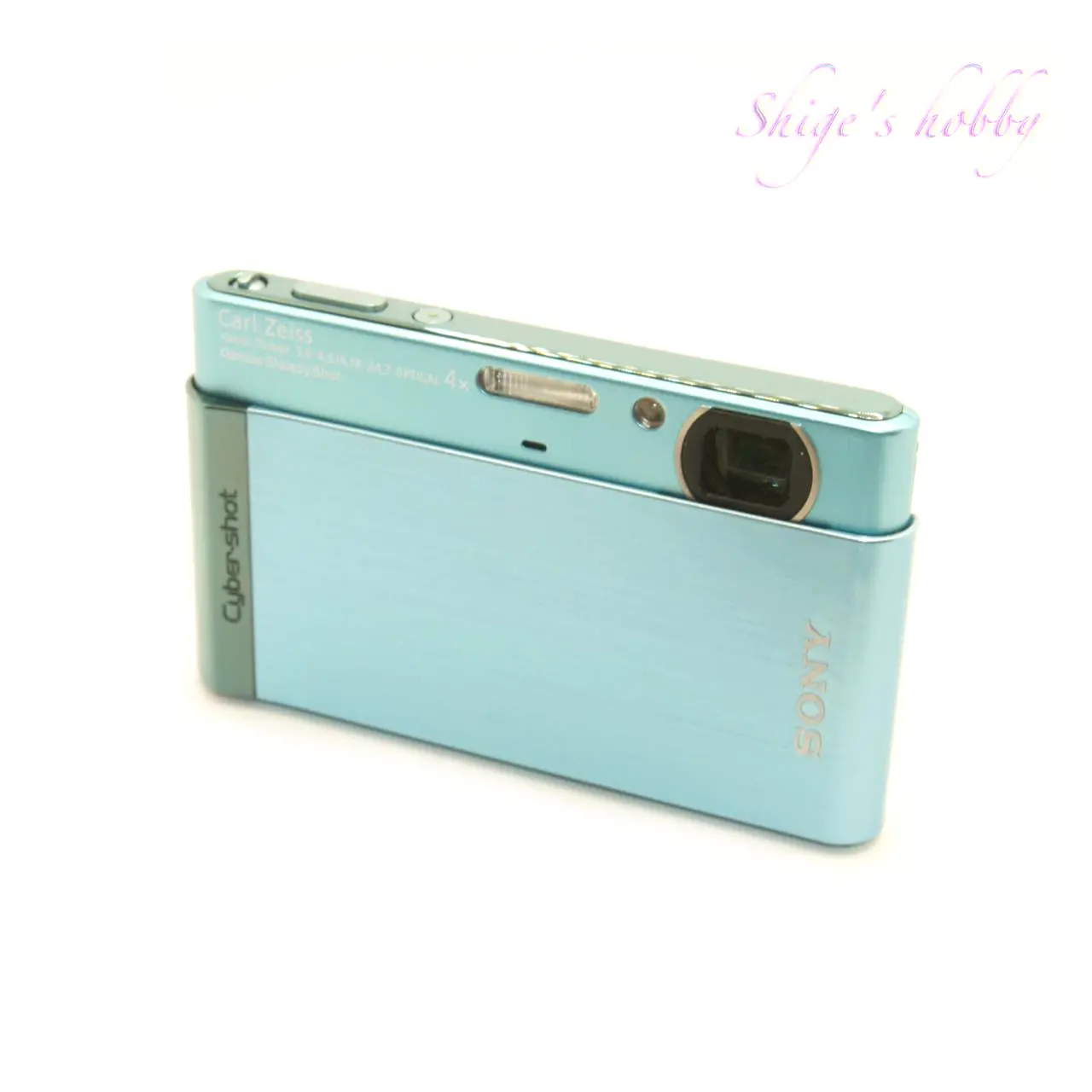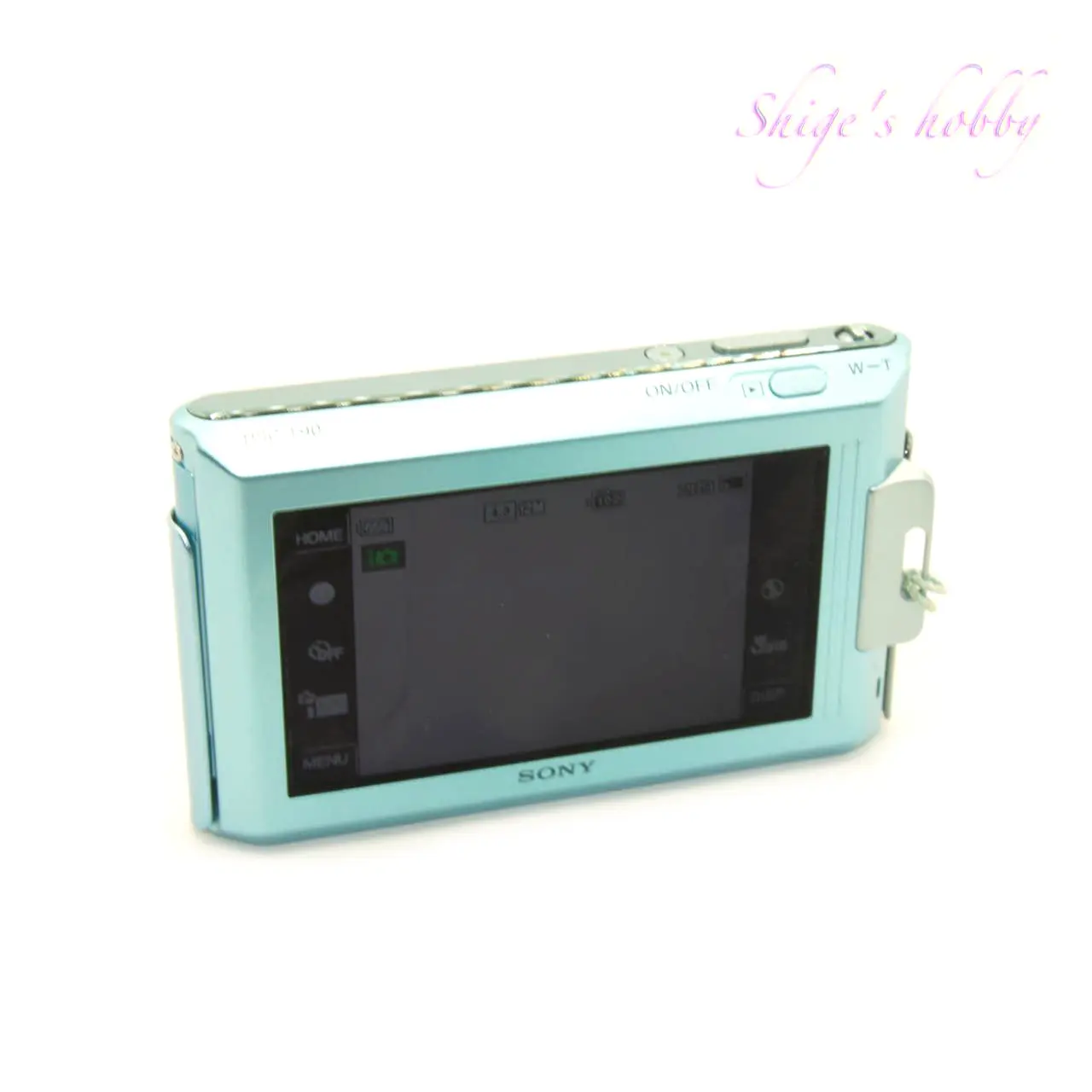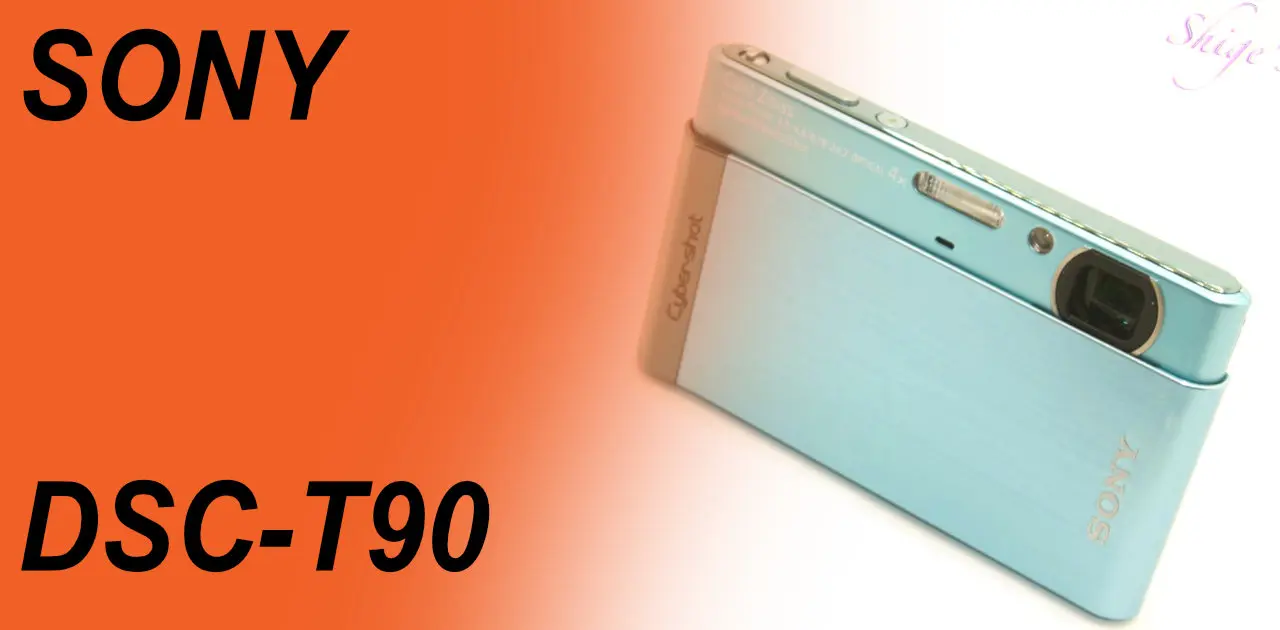A review and Photo Examples of the Sony Cybershot DSC-T90.
- Please see the disclaimer regarding advertising here.
- Italicized links in the text are advertisement links that take you to other sites.
Table of contents
Gallery
Review


1.Overview
The Cyber-shot DSC-T90 is a compact digital camera manufactured by Sony and released in 2009.
It features a 12-megapixel CCD sensor, with shutter speed, aperture, and ISO sensitivity essentially left to the camera’s control, leaving little room for adjustment. The lens construction is typically complex for a zoom lens, with 12 elements in 10 groups (four aspherical lenses and one prism element), and the focal length (35mm equivalent) is 35mm-140mm, a 4x zoom.
It’s hard to tell from the photo, but the lens cover has a hairline finish, and the camera body has an oval shape with rounded ends like a Leica M body. Excluding the lens cover, the body is very thin, measuring just 14mm thick.
The built-in memory is a modest 11MB, so an external storage medium is required, and when using external storage, a Memory Stick Duo is required. Memory Stick Duo is Sony’s proprietary memory card standard, one of the storage media that was defeated by the SD card alliance.
The use of this Memory Stick Duo has allowed the body to be kept to a minimum thickness of 13.9mm. Successor cameras, which feature a combined SD card and Memory Stick Duo slot, are thicker in the depth direction than this camera.
The included battery is the lithium-ion NP-BD1. The InfoLithium version, the NP-FD1, can also be used.
2.Usability
The DSC-T90’s image quality has increased from the 10 megapixels of the T700 and T77 to 12 megapixels, but the images themselves aren’t particularly impressive. Image quality is passable in the daytime and hopeless at night, following the standard for compact digital cameras of the time.
The autofocus speed and accuracy are lacking, so unless you time the shots slowly and synchronize them with the camera, you’ll end up with a blurry, out-of-focus photo.
The focal length starts at 35mm and is a 4x zoom, which was standard for the time and not wide enough for wide-angle shooters.
I’d love a successor model starting at 28mm or 24mm, but the successor cameras that meet the lens specifications don’t have the same cohesive design as the T700 and T90, so I’m not really keen on it.
The lens is a Carl Zeiss brand, but ghosting occurs in backlight, and due to the limitations of the sensor, the resolution of the images isn’t particularly high, so you hardly get a glimpse of it.
The back is dominated by an LCD display with no buttons. The display is a touchscreen, and shooting settings are configured here. The unresponsive touchscreen is a sign of its age.
The top of the body has minimal buttons: power, shutter, playback, and zoom. The camera is difficult to grip, so operation isn’t particularly easy. Pulling down the front slide cover turns the camera on and allows shooting.
This camera is the successor to the DSC-T77, and the higher-end DSC-T900 is the successor to the DSC-T700.
The DSC-T90 I purchased is an ice blue model, a rare color among compact digital cameras. This ice blue is a color not seen on other cameras, and its vivid blue is very striking. I found a used one in good condition and purchased it without hesitation. As I mentioned in my review, this color is not available on the T900.
I purchased it used, and I thought I could see a bump in the LCD screen, so I thought it might be because there was a screen protector on it. However, it turned out to be the seam between the LCD board and the LCD screen. I made a mistake and used the camera in its original state, which resulted in some of the LCD coating peeling off, which was disappointing. I quickly put a film on the front to prevent the peeling from spreading. If this film was also very sticky, there was a risk that the coating would peel off when I removed it.
Even so, I wonder if something can be done to prevent the LCD coating on Sony digital cameras from peeling off so easily.
3.Summary
In conclusion , to sum up the DSC-T90, it’s a compact digital camera with beautiful paint and surface treatment, but its shooting response is a bit lacking, and if you take it out and take a quick shot, the focus is often out of whack.
It’s not suited to quick shots, and is better suited to taking group photos, table photos, and other more relaxed subjects.
Specifications, considerations, etc.
The differences between the T90 and T900 are slight differences in dimensions and weight, the size and resolution of the rear LCD display, and the body color. The T90 has more vivid colors, while the T900 has more chic colors.
The lens cover of the T900 is better because it does not have a plated Cybershot logo, but the T900 does not have ice blue.
| Items | DSC-T90 | DSC-T900 |
| Rear LCD | 3.0-inch 230,000 dots | 3.5-inch 921,000 dots |
| Size W x H x D | 93.6×57.2×15.0mm *13.9mm at its thinnest point (excluding lens cover) | 97.9×57.8×16.3mm *15.1mm at its thinnest point (excluding lens cover) |
| Weight(g) (Memory card and battery included) | 151 | 147 |
| Color | White Brown Pink Blue Black | Bronze Brown Red Silver Black |
There was a time when each company competed over the color of compact digital cameras. Sony had a lineup of up to five colors for one camera body. Different colors were used for each series, and the ice blue of the T90 was not used anywhere else.
Around 2007 to 2010, camera models were changed as often as once every three months for the shortest model, and once every six months at the longest. During this time, it seems that a camera was released after one lot was made, so it’s impressive that planning and production was still going on.
Below is a chronological list of the names and release years of Sony’s slim cameras. There are 35 models available.
- DSC-TX30 2013
- DSC-TF1 2013
- DSC-TX20 2012
- DSC-TX300V 2012
- DSC-TX66 2012
- DSC-TX55 2011
- DSC-TX100V 2011
- DSC-TX10 2011
- DSC-T110 2011
- DSC-T99D 2010
- DSC-TX9 2010
- DSC-T99 2010
- DSC-TX5 2010
- DSC-TX7 2010
- DSC-TX1 2009
- DSC-T900 2009
- DSC-T90 2009
- DSC-T77 2008
- DSC-T700 2008
- DSC-T300 2008
- DSC-T2 2007
- DSC-T70 2007
- DSC-T200 2007
- DSC-T20 2007
- DSC-T100 2007
- DSC-T50 2006
- DSC-T10 2006
- DSC-T30 2006
- DSC-T9 2005
- DSC-T5 2005
- DSC-T7 2005
- DSC-T33 2005
- DSC-T3 2004
- DSC-T11 2004
- DSC-T1 2003
| Items | DSC-T700 | DSC-T77 | DSC-T90 |
| Camera effective pixels | 10.1-MP | 10.1-MP | 12.1-MP |
| Lens | Vario-Tessar f=6.18-24.7mm (F3.5-4.6) 35mm equivalent: 35-140mm | Vario-Tessar f=6.18-24.7mm (F3.5-4.6) 35mm equivalent: 35-140mm | Vario-Tessar f=6.18-24.7mm (F3.5-4.6) 35mm equivalent: 35-140mm |
| Image sensor | 1/2.3-inch CCD sensor | 1/2.3-inch CCD sensor | 1/2.3-inch CCD sensor |
| ViewFinder | – | – | – |
| Rear LCD | 3.5-inch 921,000 dots | 3.0-inch 230,000 dots | 3.0-inch 230,000 dots |
| Recorded Media | Memory Stick Duo 4GB built-in memory | Memory Stick Duo Built-in memory 15MB | Memory Stick Duo Built-in memory 11MB |
| Battery | NP-FD1 NP-BD1 | NP-FD1 NP-BD1 | NP-FD1 NP-BD1 |
| Size(mm) W x H x D | 95 × 58.4 × 16.4 | 93.6×57.2×15.0 | 93.6×57.2×15.0 |
| Weight(g) (Memory card and battery included) | 160 | 151 | 151 |
| Color | Silver Grey Red Pink Gold | Silver Black Green Pink Brown | White Brown Pink Blue Black |
Options
Affiliate Link
- Please see the disclaimer regarding advertising here.
- Italicized links in the text are advertisement links that take you to other sites.
- SONY DSC-T Series camera ・Ads by ebay
Reference links
Update history
- 2025.8.8
- 2024.12.29



Be First to Comment